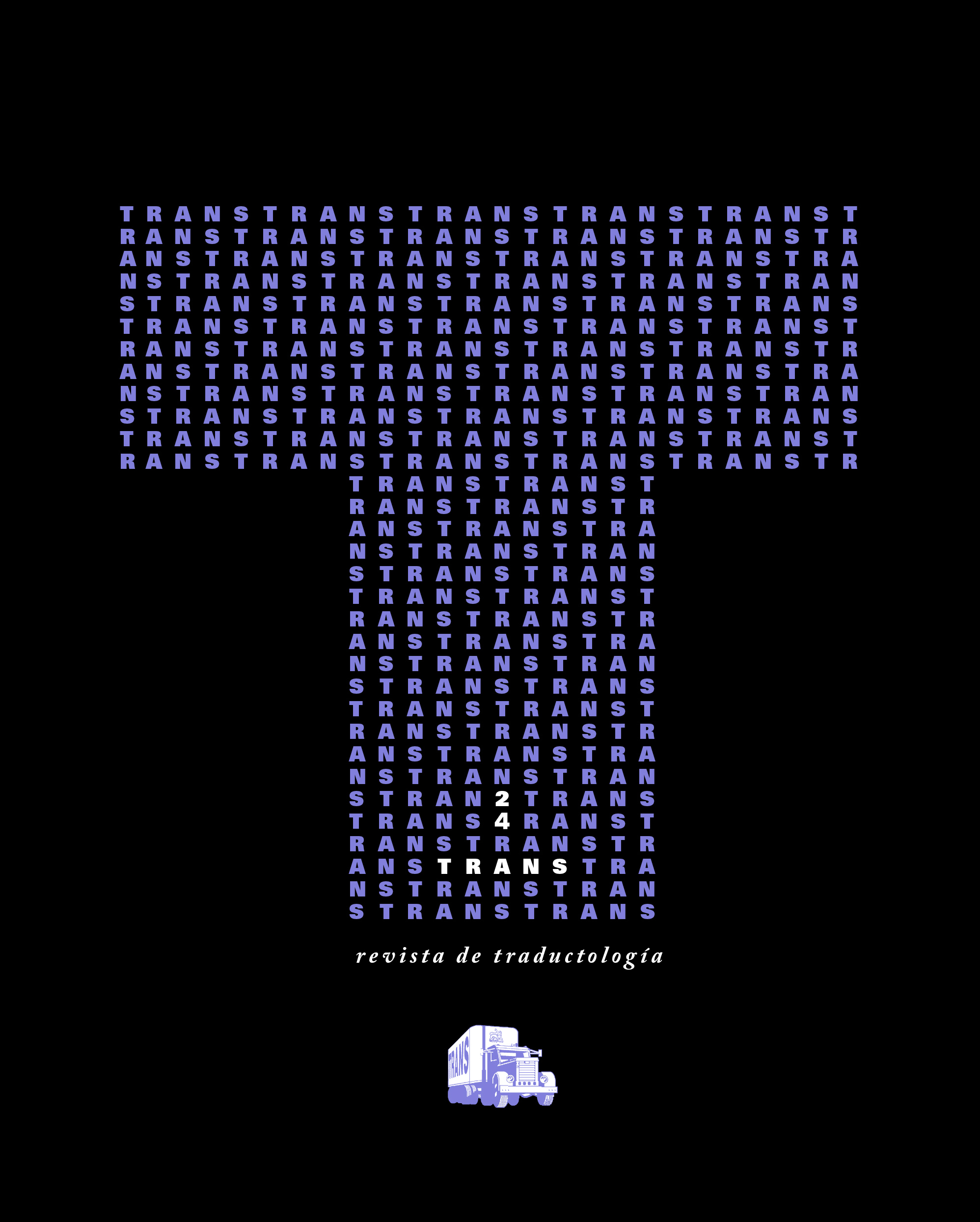A Collaborative, Didactic and Profession-Oriented Project Based on the Translation of William Shakespeare’s Sonnets
DOI:
https://doi.org/10.24310/TRANS.2020.v0i24.6795Keywords:
collaborative teaching-learning, translation, poetry, William ShakespeareAbstract
This essay addresses an innovative and collaborative didactic experience in the field of literary translation. The project took place within Advanced Literary Translation, an optional subject in the last year of the Degree in Translation and Interpreting of the University of Alicante. The main literary aim was to provide a multiple and comprehensive approach to Shakespeare's Sonnets from which the readers could attain a detailed view of the poems from various and complementary angles. To this end, we performed a double translation, in prose and verse, completed by a rhetorical analysis and a synopsis of each sonnet. All this was done in order to contribute some added value to already existing translations, none of which provides this combination. The main didactic aim was to place the students in a real professional situation, with a specific commission, in order to empower them (Kiraly, 2001, 2005, 2014). Under the supervision of and with feedback from the teacher, the methodology was based on horizontal group work with the idea that this would enhance collaboration and quality control through peer revision (Pietrzak, 2014). To this, a distribution of specific roles for each translation was added, with students alternatively acting as publisher, translator, documentalist and proof editor in each group. The publication of the results in a real book by a professional publisher was the final result sought. Apart from the dialectic process of horizontal and vertical feedbacks, an anonymous questionnaire was administered to elicit the students' degree of satisfaction and alternative didactic strategies. The project was further sanctioned by an external expert agent, the publisher, for whom the actual launching of the book involved putting his economic resources and prestige at stake.
Downloads
Metrics
Publication Facts
Reviewer profiles N/A
Author statements
Indexed in
-
—
- Academic society
- N/A
- Publisher
- Universidad de Málaga
References
Berman, Antoine (1990): «La retraduction comme espace de la traduction», Palimpsestes, 4, 1-7.
Brownlie, Siobhan (2006): «Narrative Theory and Retranslation Theory», Across Languages and Cultures, 7:2, 145-170.
Deane-Cox, Sharon (2014): Retranslation. Translation, Literature and Reinterpretation, London: Bloomsbury.
Durán, David (2014): Aprenseñar. Evidencias e implicaciones educativas de aprender enseñando, Madrid: Síntesis.
Gambier, Yves (1994): «La retraduction, retour et détour», Meta, 39:3, 413-417.
González Davies, María & Vanessa Enríquez Raído (2016): Situated learning in translator and interpreter training: bridging research and good practice. The Interpreter and Translator Trainer (ITT) 10/1.
Johnson, David W. & Roger T. Johnson (1990): «Cooperative learning and achievement», en Shlomo Sharan (ed.), Cooperative learning: Theory and research, 23-37, New York: Praeger Publishers.
Kelly, Dorothy (2005): A Handbook for Translator Trainers, Mánchester: St Jerome.
Kiraly, Donald Charles (1995): Pathways to Translation. Pedagogy and Process, Kent: Kent State University Press.
Kiraly, Donald Charles (2001): «Towards a Constructivist Approach to Translator Education», Quaderns. Revista De Traducció, 6, 50-53.
Kiraly, Donald Charles (2005): «Project-Based Learning: A Case for Situated Translation», Meta, 50/4, 1098-1111.
Kiraly, Donald Charles (2014): «From Assumptions about Knowing and Learning to Praxis in Translator Education», inTRAlinea, (s.p.).
Lave, Jean & Etienne Wenger (1991): Situated Learning: Legitimate Peripheral Participation, Cambridge: Cambridge University Press.
Lobato Patricio, Julia (2013): «Propuesta didáctica para las clases de traducción especializada: El aprendizaje basado en proyectos», Tonos Digital, 25, (s.p.).
Marco Borillo, Josep (2016): «On the margins of the profession: the work placement as a site for the literary translator trainee’s legitimate peripheral participation», The Interpreter and Translator Trainer (ITT), 10/1, 29-43.
Paloposki, Outi & Kaisa Koskinen (2004): «A Thousand and One Translations: Revisiting Retranslation», en Gyde Hansen, Kirsten Malmkjaer & Daniel Gile (eds.), Claims, Changes and Challenges in Translation Studies, 27-38 Ámsterdam: John Benjamins.
Pietrzak, Paulina (2014): «Towards Effective Feedback to Translation Students: Empowering Through Group Revision and Evaluation», inTRAlinea (Special Issue) (s.p.).
Venuti, Lawrence (2004): «Retranslations. The Creation of Value», Bucknell Review, 47:1, 25-38.
Downloads
Published
How to Cite
Issue
Section
License
All contents published in TRANS. Revista de Traductología are protected under the Creative Commons Attribution-NonCommercial-ShareAlike 4.0 International (CC BY-NC-SA 4.0) license. All about this license is available in the following link: <http://creativecommons.org/licenses/by-nc-sa/4.0>
Users can copy, use, redistribute, share and exhibit publicly as long as:
- The original source and authorship of the material are cited (Journal, Publisher and URL of the work).
- It is not used for comercial purposes.
- The existence of the license and its especifications are mentioned.
- ShareAlike — If you remix, transform, or build upon the material, you must distribute your contributions under the same license as the original.
There are two sets of authors’ rights: moral and property rights. Moral rights are perpetual prerogatives, unrenounceable, not-transferable, unalienable, imprescriptible and inembargable. According to authors’ rights legislation, TRANS. Revista de Traductología recognizes and respects authors moral rights, as well as the ownership of property rights, which will be transferred to University of Malaga in open access.
The property rights are referred to the benefits that are gained by the use or the dissemination of works. TRANS. Revista de Traductología is published in an open access form and it is exclusively licenced by any means for doing or authorising distribution, dissemination, reproduction, , adaptation, translation or arrangement of works.
Authors are responsable for obtaining the necessary permission to use copyrighted images.













21.png)
